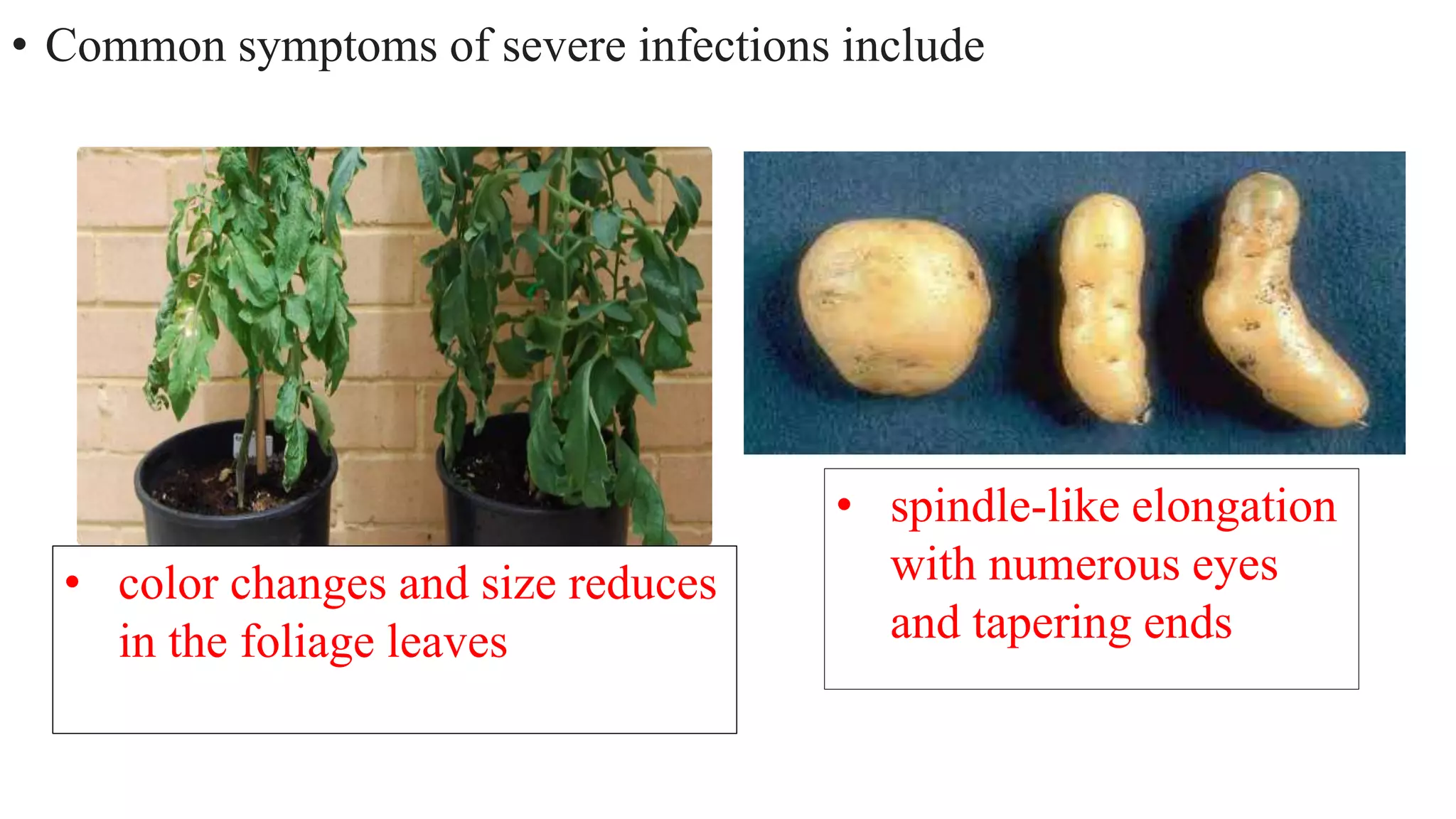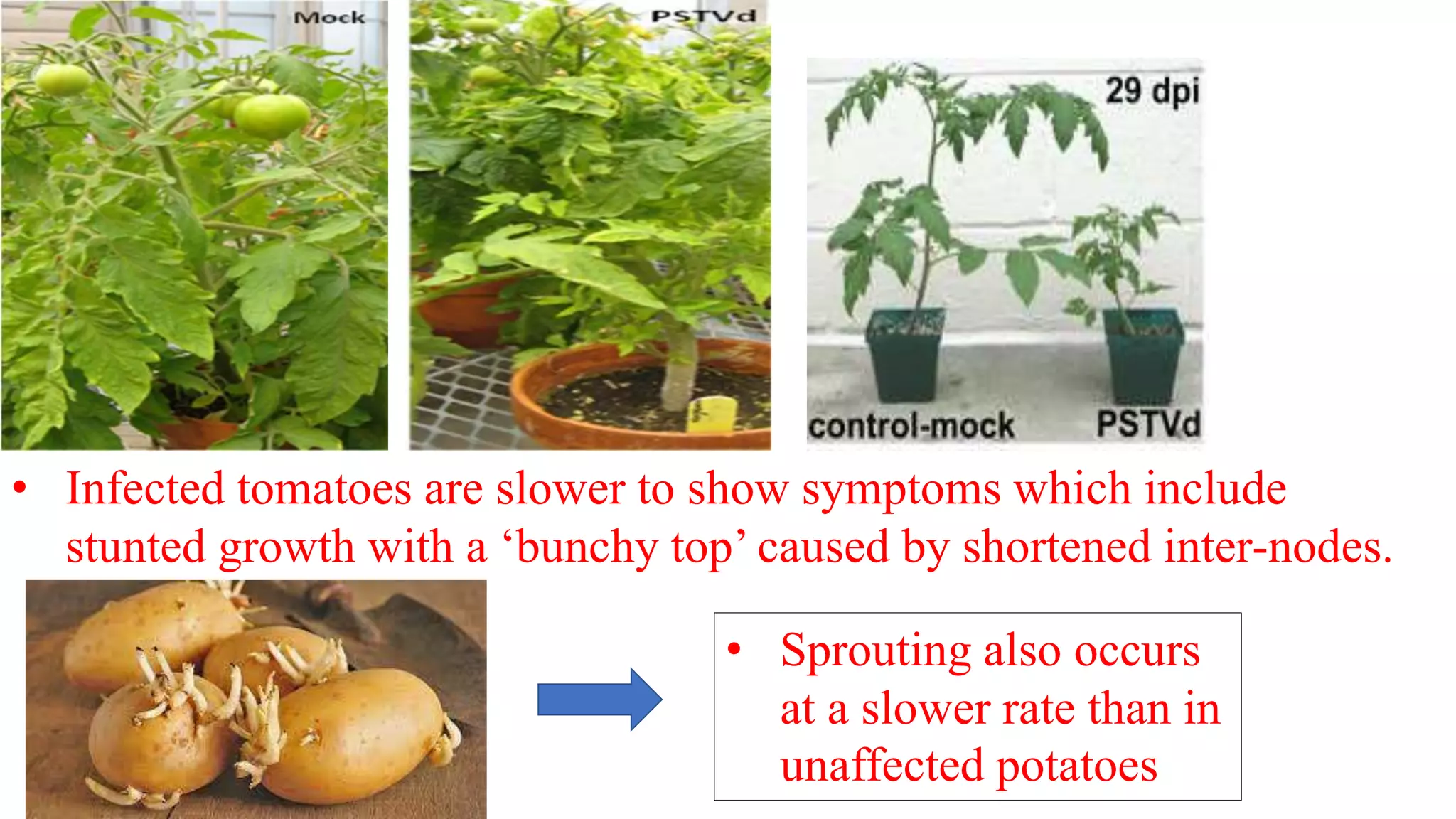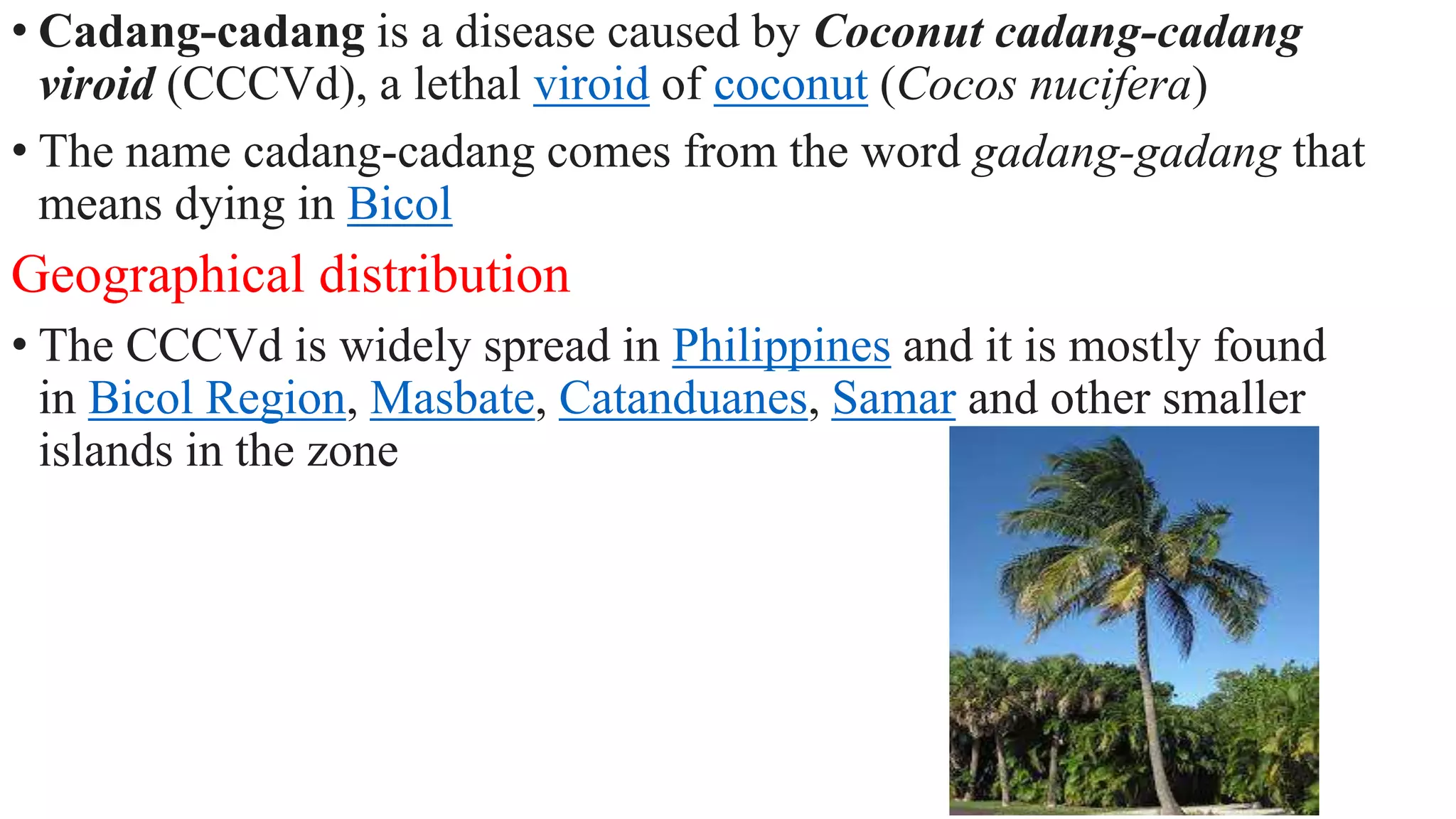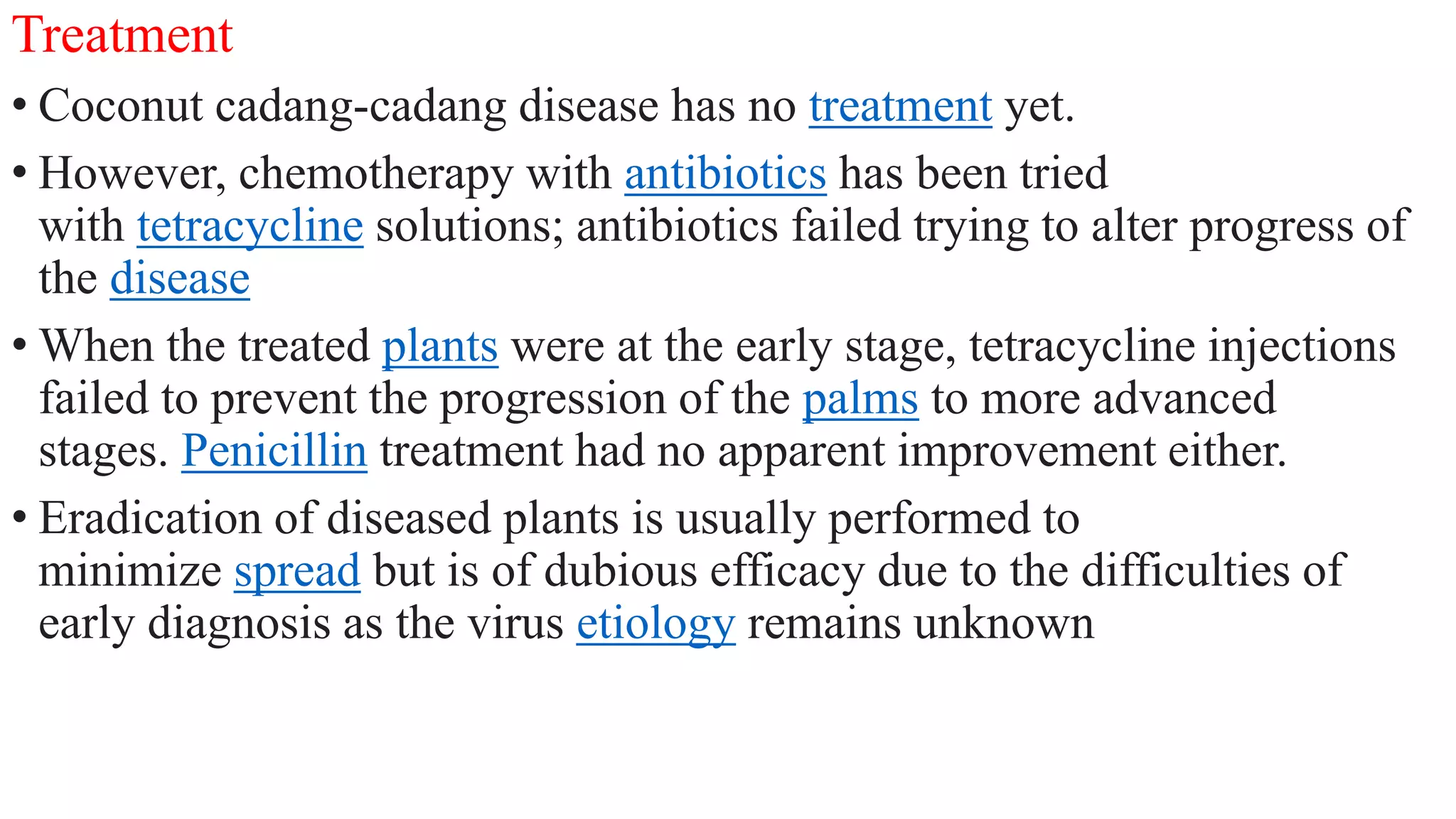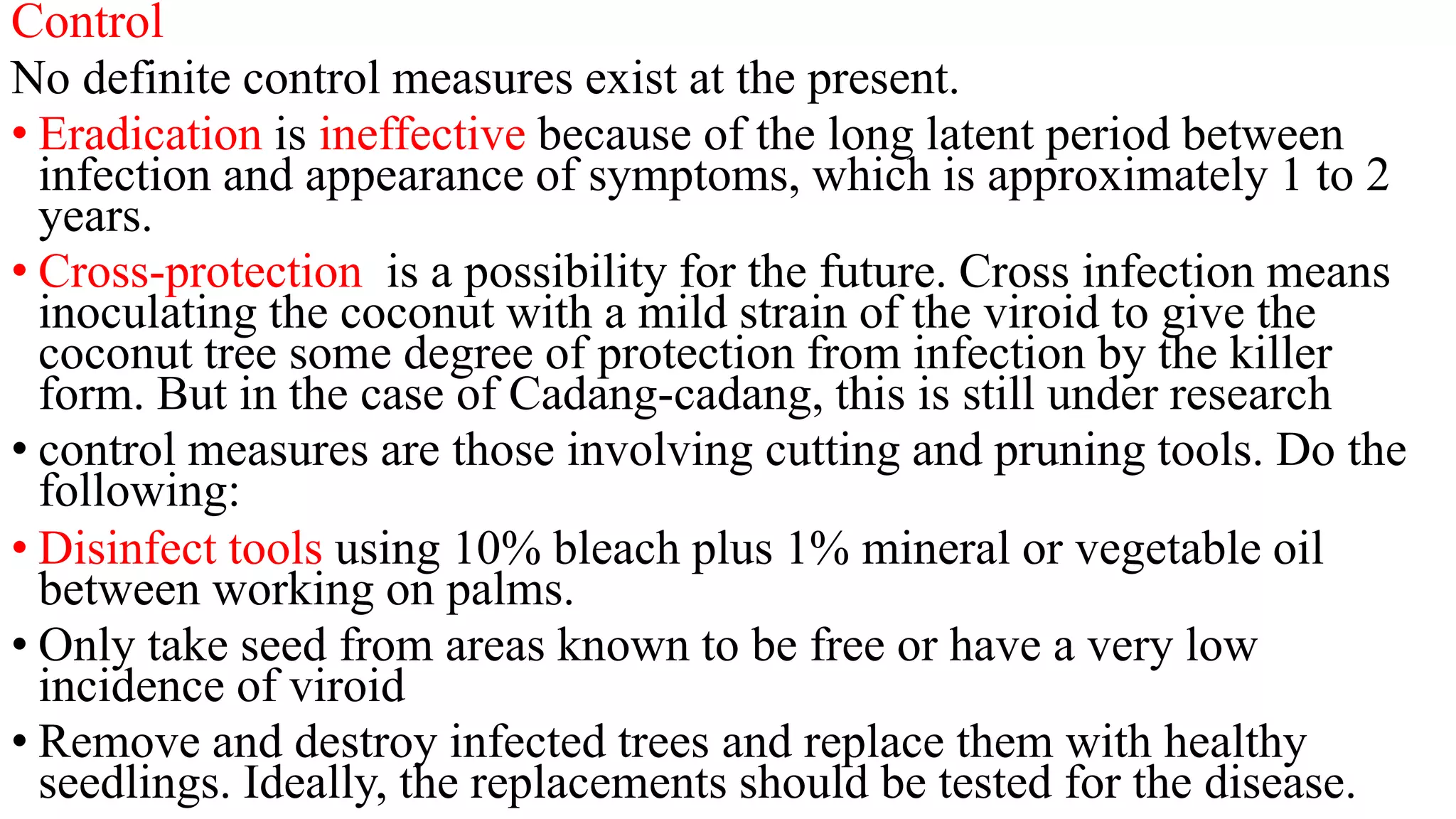The document discusses two viroids: the Potato Spindle Tuber Viroid (PSTV) and the Coconut Cadang-Cadang Viroid (CCCV), detailing their molecular structures, hosts, symptoms, transmission, detection, and control measures. PSTV primarily affects potatoes and tomatoes with various symptom severity, while CCCV is a lethal viroid for coconuts that induces symptoms over several years. Both viroids lack effective treatments, emphasizing the importance of using healthy planting materials and proper sanitation to control their spread.



